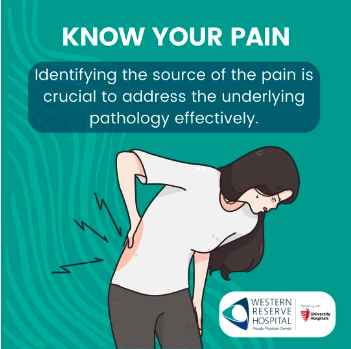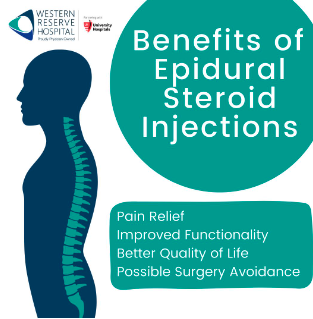One of the most prevalent procedures in the United States is the lumbar epidural steroid injection, with approximately 10 to 11 million procedures performed each year. This highly effective treatment has gained widespread popularity. Additionally, lumbar facet injections or radiofrequency ablation are also commonly performed.
Another significant option addresses issues with sacroiliac joints, which account for around 20% of back pain cases. Given the prevalence of this condition, such treatments are frequently administered. Identifying the exact source of the pain is crucial as the procedure needs to address the underlying pathology effectively.

For instance, if the pain originates from a herniated disc, causing symptoms like sciatica or other sensations due to nerve compression, an epidural injection would be the most suitable option. On the other hand, if the pain is associated with fascia joints, a specific intervention for that joint would be recommended.
To provide appropriate treatment for pain stemming from the sacroiliac joint, understanding the specific pathology is crucial. Precise identification of the issue is essential for effective assistance.

Epidural Steroid Injections
Epidural steroid injections are minimally invasive procedures that involve delivering a solution of local anesthetic and corticosteroid medicine. This solution is administered to the epidural space, which is situated outside the spine. These injections are commonly used to alleviate back - leg pain, as well as sciatica. When administered in the neck area, they can effectively address symptoms in the arm.
Understanding the procedure's details is crucial. The first and foremost step involves identifying the source of the pain. In some cases, the procedure serves as a diagnostic tool, aiding the spine surgeon in pinpointing the exact origin of the pain through a diagnostic injection. Moreover, it can also have therapeutic benefits by providing relief.
The injection is typically not the initial treatment option. Usually, initial approaches include physical therapy, chiropractic manipulation, massage, or specific medications. If these methods prove ineffective, exploring alternative options, including injections, becomes a reasonable step.
The procedure generally takes about 20 minutes. The patient is invited to the special procedure area, where appropriate sanitation measures, including mask usage, are strictly adhered to.
During the procedure, the patient is positioned on their belly, and a small amount of local anesthetic is administered to numb the skin, ensuring better tolerance. Most patients tolerate the procedure exceptionally well. The use of fluoroscopy ( X-ray) guides a small, fine needle to deliver the medicine precisely where it's needed.
Afterward, patients are usually advised to avoid submerging underwater for approximately 24 hours and can use ice if needed, although it's generally well tolerated.
Benefits of Getting Epidural Steroid Injections
The primary benefit of this treatment is pain relief, with approximately eight or nine out of ten patients reporting significant pain reduction. Another advantage is improved functionality, leading to better walking abilities and reduced issues with sitting or limping, allowing patients to resume most normal activities.
Overall, these positive outcomes contribute to an enhanced quality of life for patients. Additionally, a noteworthy benefit is the potential to avoid spine surgery. A study demonstrated that 80% of patients who received cervical epidural steroid injections were able to avoid surgery.

Are There Downsides to Getting These Injections?
Epidural injections are incredibly safe, with approximately 10 to 11 million performed annually in the United States alone. The most frequently reported concern is irritation at the injection site, affecting only about 2 to 3 out of every 100 patients. However, it's essential to note that this occurrence is relatively uncommon.
Approximately one in less than a thousand individuals may experience headaches as a side effect of these injections. This low incidence is attributed to the precise administration of the injections, which are guided by X-ray. Patients with diabetes need to exercise caution when using cortisone and closely monitor their blood sugar levels following the injections.
Patients taking blood thinners may be asked for permission to temporarily halt their medication before certain types of injections, though not all epidural injections require this. While serious complications are rare, they can potentially include infections, bleeding, and a worsening of symptoms.
How Many Injections Are Needed for Back Pain?
Typically, when discussing back pain radiating to the leg (sciatica) or arm, a single treatment is usually sufficient, offering significant pain relief. Previously, a series of three weekly injections were administered to patients. However, it was later discovered that the outcomes were similar, making it unnecessary to repeat the injection.
Occasionally, if the injection proves ineffective, it may need to be administered differently. Typically, the injection provides temporary relief for 2 to 4 months, and some patients experience relief for up to 6 months or even longer. If necessary, the injections can be repeated. It's generally advised not to exceed 4 injections per year.
What Results Can I Expect?
The injection aims to reduce pain levels and improve overall function, with a strong possibility of enhancing the quality of life. It is specifically designed to aid in rehabilitation and is often used in conjunction with other treatments for chronic back pain, as this condition usually requires ongoing maintenance.
What Should I Do if the Injections Don't Work?
Patients rarely fail to experience the expected relief from treatment, and one possible reason for this is the source of pain is in a different area. In such instances, alternative injection methods can be employed, such as transforaminal epidural steroid injections or selective nerve root blocks. These procedures are akin to epidural steroid injections and are designed to administer medicine to slightly different target areas, often proving highly effective.
Furthermore, the caudal epidural injection can be administered slightly lower, in the sacral area. This particular procedure is designed for patients who have undergone previous surgeries and have significant scar tissue in that region. In cases where previous injections have not yielded positive results, this approach is recommended.
It's important to note that there are various alternative treatment options available, including physical rehabilitation, mind-body techniques, medications, and an array of different tools. Finding the most suitable approach among the many available methods is crucial to achieving effective relief.
If your condition is severely impacting your daily activities and enjoyment of life, surgery can be considered a viable solution. It aims to address the issue and improve your overall functionality and well-being.
Pain Medicine at Western Reserve Hospital — 100% Patient Centered Pain Treatment
You don’t have to suffer from back pain. At the Center for Pain Medicine at Western Reserve Hospital, we provide the latest innovations in cancer pain treatment. When chronic pain sets in, your life shrinks to fit your pain. Your health, work, and relationships suffer. You become less present in your daily activities. Often, you cannot sleep or suffer from depression. Living with chronic pain is hard, and the anxiety, stress, and anger that accompany it can make the pain even worse. The pain specialists at the Center for Pain Medicine at Western Reserve Hospital can help you conquer your pain with sophisticated new treatments and compassionate, professional care. Contact us at (330) 971-7246 to schedule an appointment and begin the journey to pain relief today.
